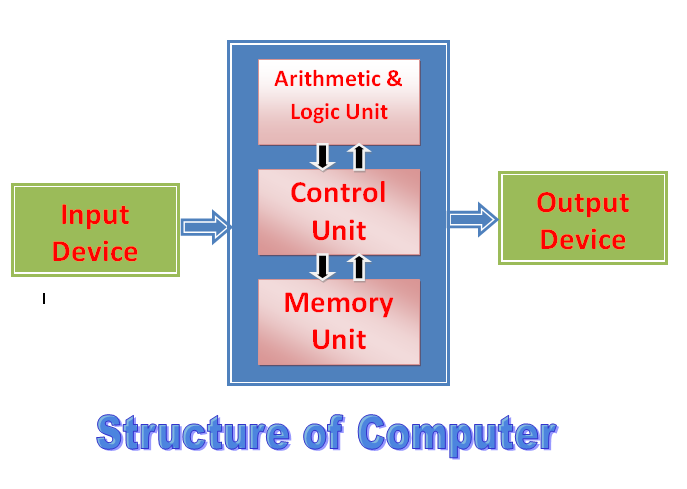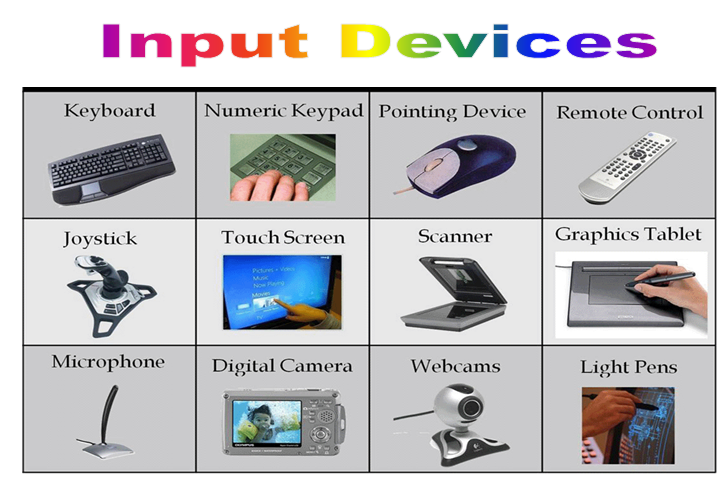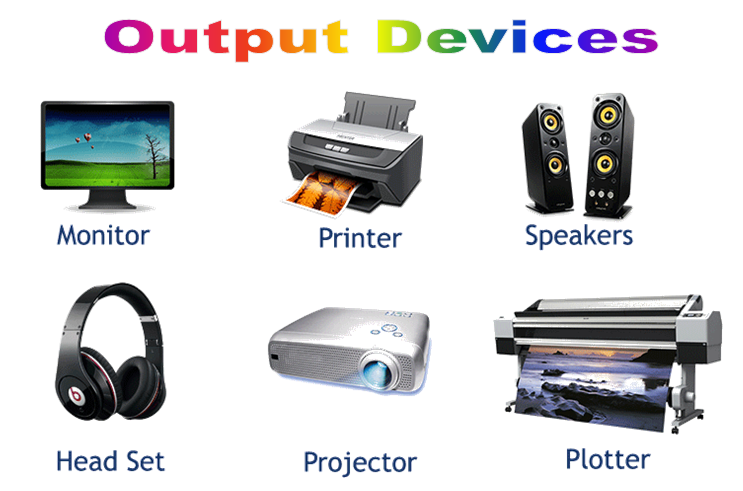
Input Device
An input device lets you communicate with a computer. you can use input device to enter information and issue commands.
Ex-Keyboard, Mouse, Scanner, Digital camera, Touch pads and Joystick etc.

Processing Unit/CPU
- CPU is considered as the brain of the computer.
- CPU performs all types of data processing operations.
- It stores data, intermediate results, and instructions (program).
- It controls the operation of all parts of the computer.
- The CPU is constantly following instructions of computer programs that tell it which data to process and how to process it. Without a CPU, we could not run programs on a computer.
ALU (ARITHMETIC LOGIC UNIT)
This unit consists of two subsections namely,
- Arithmetic Section
- Logic Section
- Arithmetic Section – Function of arithmetic section is to perform arithmetic operations like addition, subtraction, multiplication, and division. All complex operations are done by making repetitive use of the above operations.
- Logic Section- Function of logic section is to perform logic operations such as comparing, selecting, matching, and merging of data.
CONTROL UNIT
- This unit controls the operations of all parts of the computer but does not carry out any actual data processing operations.
- It is responsible for controlling the transfer of data and instructions among other units of a computer.
- It manages and coordinates all the units of the computer.
- It obtains the instructions from the memory, interprets them, and directs the operation of the computer.
- It communicates with Input/Output devices for transfer of data or results from storage.
- It does not process or store data.
Memory Unit
- A memory is just like a human brain. It is used to store data and instructions. Computer memory is the storage space in the computer, where data is to be processed and instructions required for processing are stored.
- It stores all the data and the instructions required for processing.
- It stores intermediate results of processing.
- It stores the final results of processing before these results are released to an output device.
- All inputs and outputs are transmitted through the main memory.
Output Device
An output device displays information on a screen, creates printed copies or generates sound.
Ex-Monitor, Projector, Printer, Headphone, Speaker etc.
